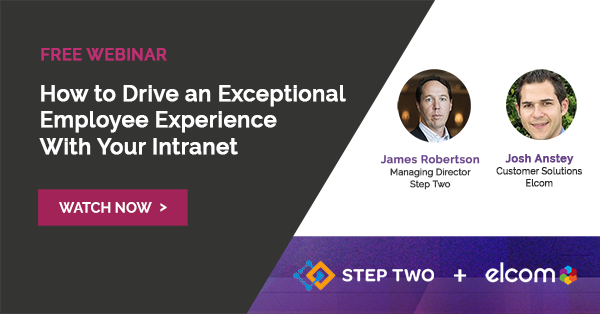Employee engagement software has emerged as a pivotal tool in bridging the gap between various levels of an organisation, fostering a culture of collaboration and inclusivity.
Recent studies underscore this shift: Gallup found that businesses with highly engaged teams show a 21% increase in profitability. Yet, engaging a diverse and dispersed workforce remains a challenge for many. This is where understanding the key features of employee engagement software becomes crucial. The right platform can transform the internal communication landscape, boosting productivity and employee satisfaction.
As we explore the key employee engagement platform features, it's essential to focus on those that align with the unique needs of your organisation. From enhancing communication channels to automating routine processes, the best features for employee engagement software are those that streamline operations and foster a connected, informed, and engaged workforce.
What is an Employee Engagement Platform?
At its core, an employee engagement platform is a digital solution designed to foster and enhance the connection between an organisation and its employees.
It can come in various forms. Generally, the foundation is a modern, integrated intranet with features that serve as a central hub for communication, collaboration, and culture-building within an organisation, connecting various systems and tools.
Implementing an employee engagement platform involves:
- Understanding Your Audience: Before choosing a platform, it’s crucial to understand the needs and preferences of your workforce. Consider conducting surveys or focus groups to gather insights.
- Selecting the Right Platform: Look for a platform that aligns with your organisation's size, structure, and communication needs. It should be user-friendly, customisable, and scalable.
- Promoting Adoption: Encourage employees to use the platform by integrating it into their daily routines. Provide training and support to ensure everyone is comfortable with the new tool.
- Measuring and Adjusting: Regularly assess the platform’s effectiveness through employee feedback and usage data. Be prepared to make adjustments to ensure it continues to meet the evolving needs of your organisation.
Benefits of Employee Engagement Platforms
Enhanced Communication
One of the primary benefits of these platforms is the ability to streamline communication across various departments and locations. With features like news feeds, chat functions, and forums, information can be shared quickly and efficiently, ensuring that all team members, regardless of their location, are on the same page.
Increased Employee Engagement
By providing a space for employees to voice their opinions, share ideas, and collaborate on projects, these platforms can significantly boost employee engagement. Engaged employees are typically more productive, motivated, and committed to their organisation's goals.
Centralised Resources
Employee engagement platforms often include a repository for important documents, policies, and resources. This centralisation through a modern intranet repository makes it easier for employees to find the information they need, reducing time wasted on searching for documents and increasing overall efficiency.
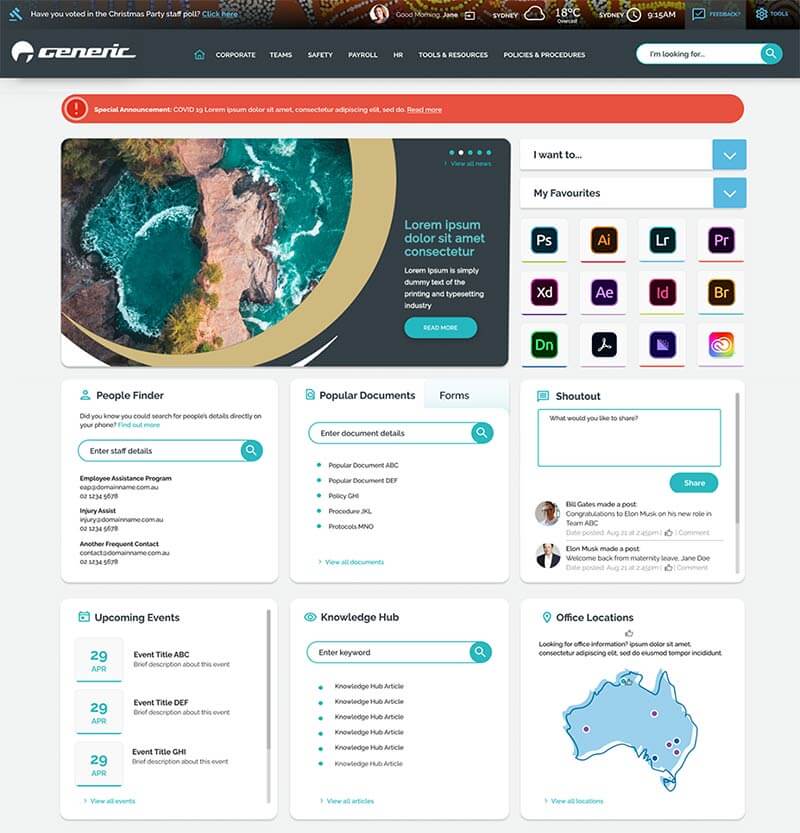
Cultural Cohesion
For organisations spread across different regions, maintaining a cohesive culture can be challenging. These platforms offer a space for sharing company news, celebrating achievements, and reinforcing company values, helping to build a unified organisational culture.
Feedback and Analytics
Many platforms come equipped with tools for gathering employee feedback and analytics. This data is invaluable for understanding employee needs, measuring engagement levels, and identifying areas for improvement.
6 Employee Engagement Platform Features
When choosing employee engagement software, it's crucial to delve deeper into the practicalities and benefits of the key features. Let's expand on three critical aspects: accessible content management, collaborative and social features, and form and workflow automation.
1. Accessible Content Management
User-Friendly Interface
The platform should have an intuitive interface that allows employees of all skill levels to easily navigate and manage content. This includes straightforward options for creating, editing, and publishing content without needing extensive technical know-how. This will enable your organisation to deliver a consistent and engaging content strategy.
Mobile Accessibility
With the increasing reliance on smartphones, one of the top features of employee engagement apps is that the platform should be mobile-responsive. This ensures that employees can access and interact with content anytime, anywhere, which is especially important for a geographically dispersed workforce.
Customisation and Personalisation
The ability to customise dashboards and content feeds according to individual or departmental needs makes the platform more relevant and engaging for users. Personalisation can include tailored news, updates, and alerts based on the user's role or interests.
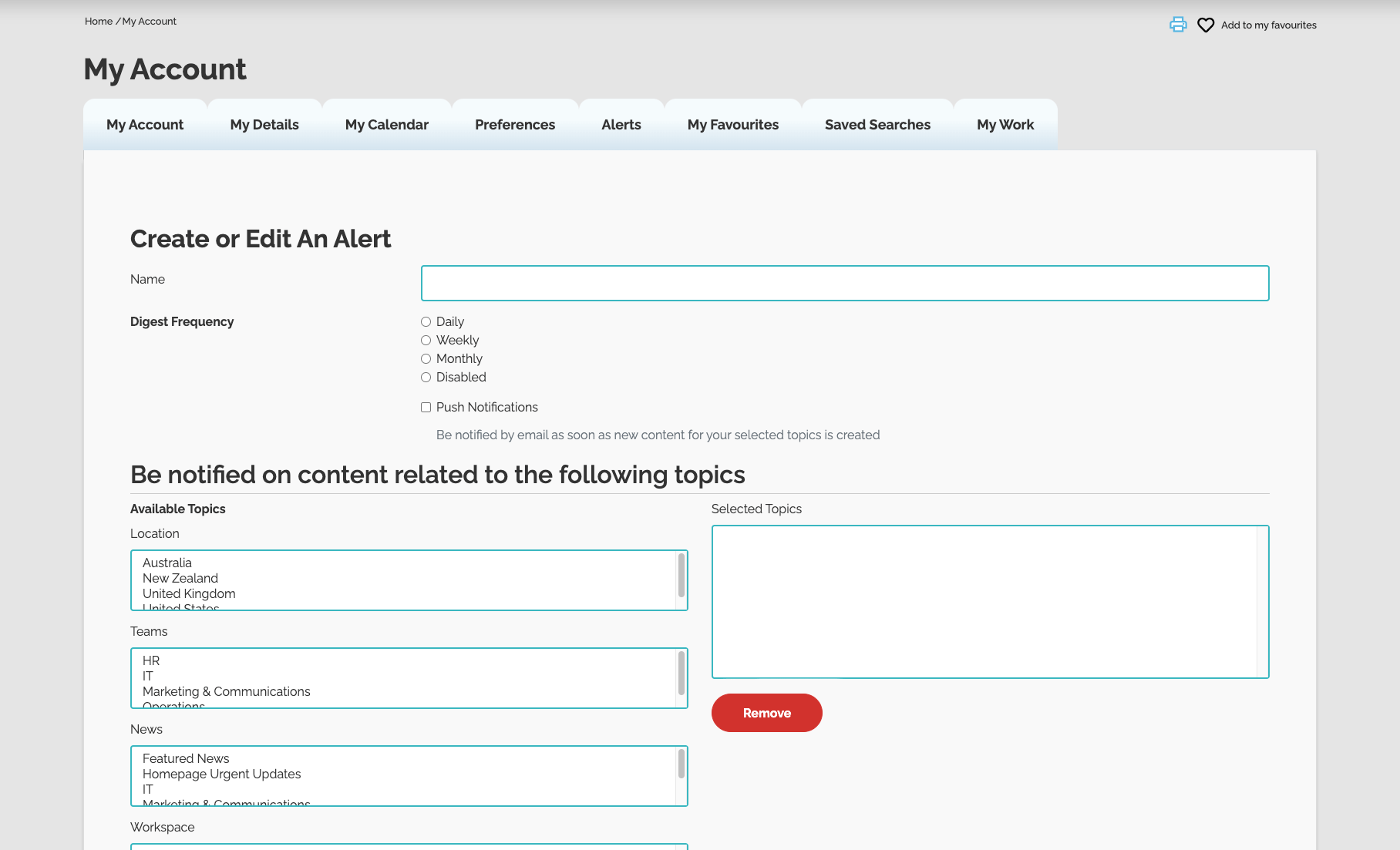
2. Collaborative and Social Features
Interactive Tools
Features such as forums, blogs, and social networking capabilities encourage dialogue and idea sharing among employees. This fosters a collaborative environment where knowledge and insights are freely exchanged.
Real-Time Communication
Incorporating instant messaging and commenting functionalities can facilitate real-time discussions, enhancing teamwork and expediting decision-making processes.
Recognition and Engagement
Tools for recognising employee achievements and milestones can significantly boost morale. Features like 'Employee of the Month', leaderboards, or shout-outs for project successes contribute to a positive and engaging workplace culture. Newsletter ideas such as community involvement and team successes can go a long way in encouraging engagement.
3. Form and Workflow Automation
Streamlined Processes
Utilising form and workflow automation, routine tasks such as leave requests, expense approvals, and onboarding processes can be automated. This not only saves time but also reduces the likelihood of errors.
Customisable Forms
The ability to create custom forms that cater to specific organisational needs is vital. Elcom’s platform allows for the creation of forms with various field types, ensuring flexibility and relevance to different departmental requirements.
Integrated Workflow Management
A key feature is the integration of forms with workflow management. This means that once a form is submitted, it automatically triggers the relevant workflow, routing the information to the appropriate personnel for action. This feature ensures a seamless flow of information and accelerates operational efficiency.
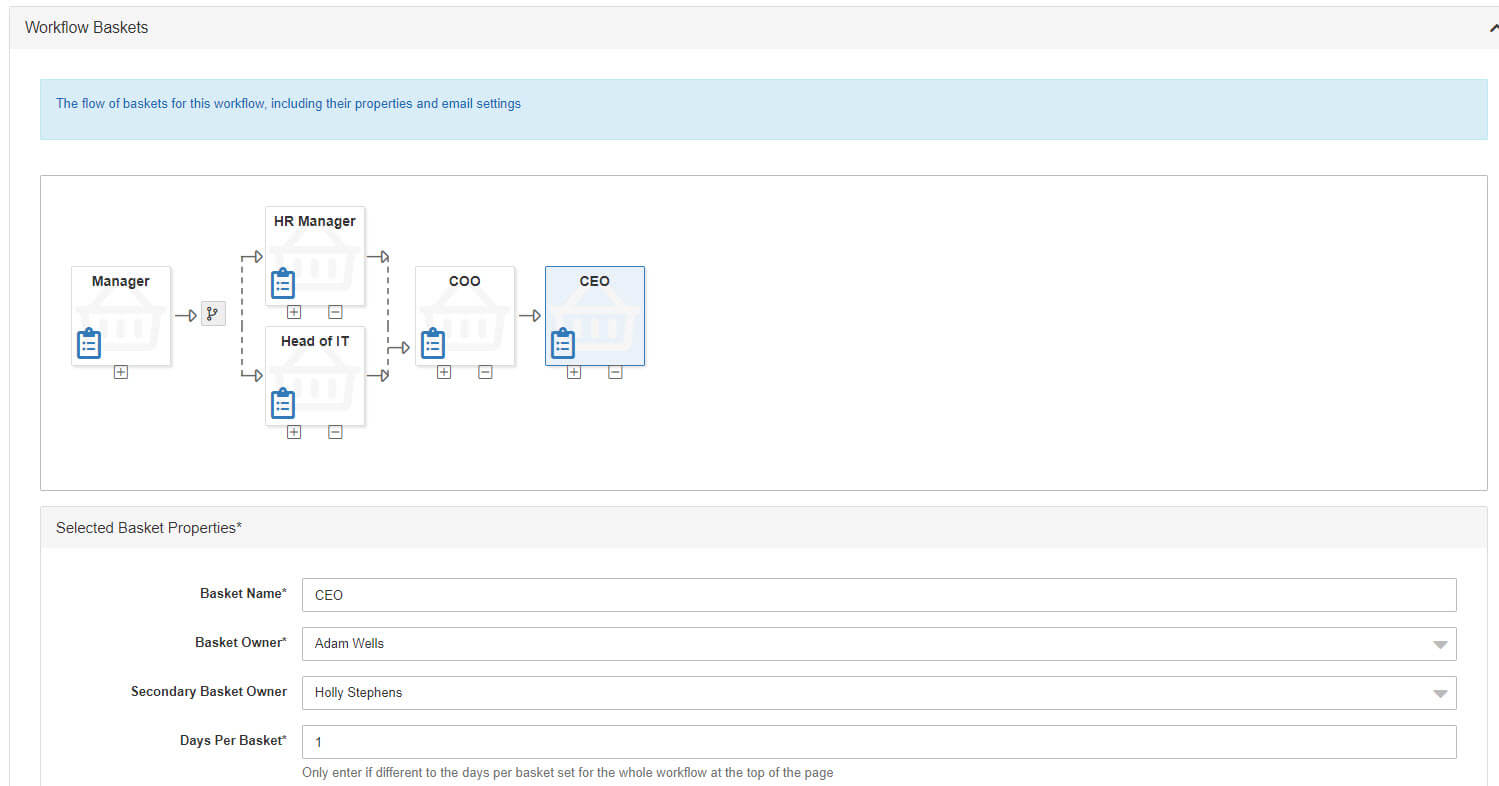
Reporting and Analytics
The platform should offer robust reporting capabilities, allowing managers to track the progress of forms and workflows. This insight is crucial for identifying bottlenecks, improving processes, and making data-driven decisions.
4. Intuitive Search
Comprehensive Indexing
A key aspect of an effective search function is comprehensive indexing. The search engine should be capable of indexing all types of content within the platform, including PDFs, Word documents, and web pages, ensuring that no information is left undiscoverable.
Search Filters and Advanced Options
To enhance the search experience, offering advanced search options is crucial. This includes the ability to filter results by date, content type, author, or department. Such filters enable users to narrow down results quickly and find the exact information they need.
Promoting Popular Content
The search function can be optimised by promoting popular or frequently accessed content. This approach helps in quickly directing users to the most relevant and commonly sought-after information, improving overall efficiency.
Regularly Reviewing Search Analytics
Understanding what employees are searching for can provide valuable insights. Regularly reviewing search analytics helps in identifying trends, common queries, and areas where additional resources may be needed, allowing for continuous improvement of the content strategy.
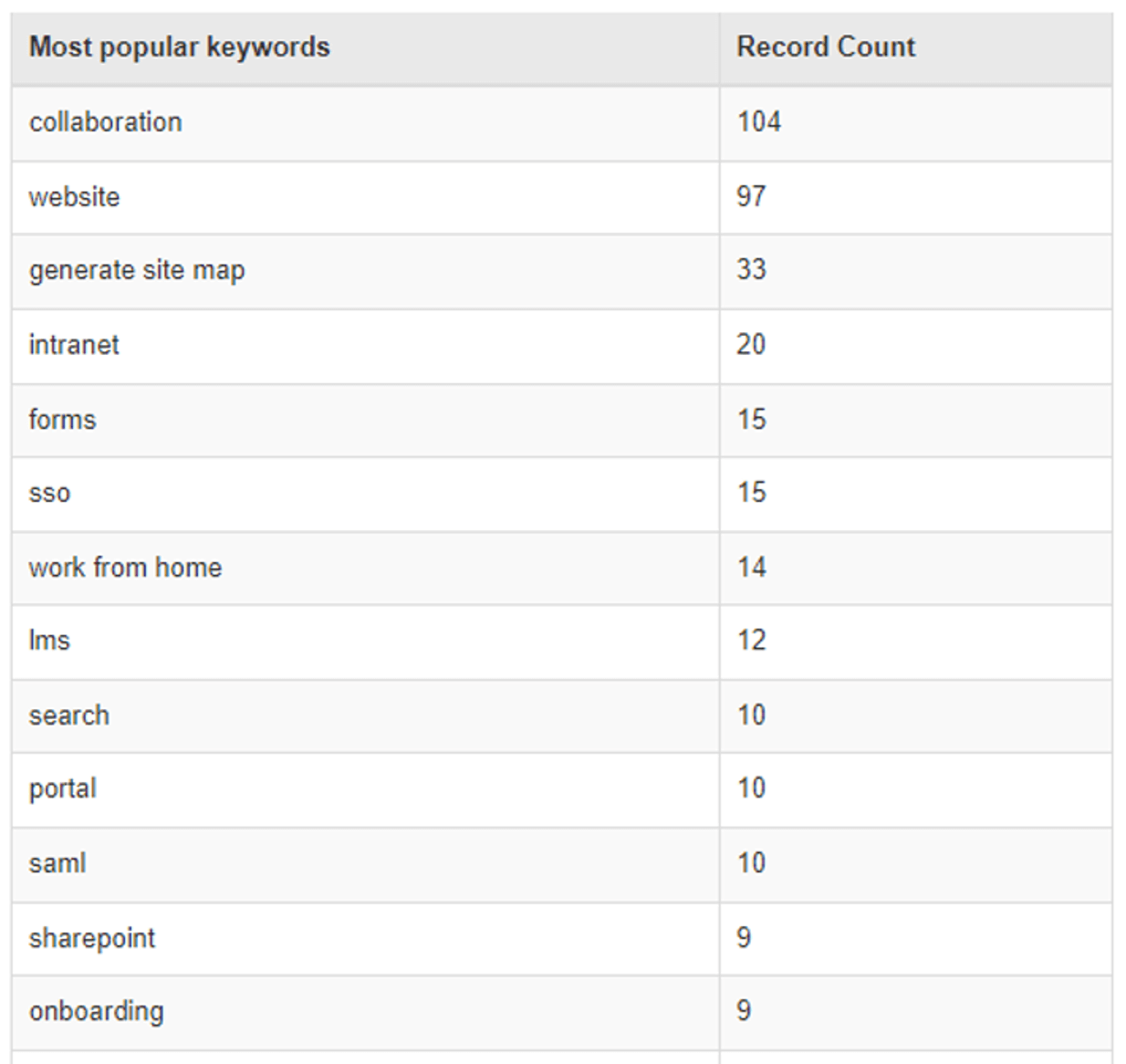
5. Corporate Directories
Easy Navigation
A well-organised corporate directory is essential for helping employees find and connect with the right colleague quickly. It should allow users to search by name, department, location, or role.
Rich Employee Profiles
Beyond basic contact information, profiles can include details like skills, current projects, and areas of expertise. This not only aids in finding the right person for a task but also helps in building a more connected and collaborative workforce.
Integration with Other Systems
Ideally, corporate directories should integrate with other systems like HR software to ensure that employee information is always up-to-date and accurate, reducing the administrative burden of manual updates.
6. Widgets
Personalised News Feeds
Incorporating widgets for personalised news feeds allows employees to stay updated with the latest company news, announcements, and updates relevant to their role or department. This keeps everyone informed and engaged with the organisational happenings.
Quick Links
Widgets that provide quick links to frequently used tools, resources, or external websites can significantly enhance productivity. They offer a convenient shortcut to essential items, saving time and effort.
Social Widgets
Including social widgets like staff birthdays, anniversaries, or social events can foster a sense of community and belonging among employees. These widgets can highlight personal achievements and upcoming social gatherings, contributing to a more connected workplace culture.
Dynamic Widgets
Dynamic widgets can be used to automatically customise content pages and dashboards. Widgets each provide a specific function, such as displaying a company event calendar, news, blogs and other resources feeds, lists of documents, gallery of images and libraries of assets. Publishers can create and maintain one widget and use it to display information across several articles simply by inserting a tag within either an article or template.
Conclusion
This article explored what is employee engagement software. And by now you should understand that it is more than a technical decision; it's a strategic move towards enhancing your organisation's internal communication, aiding employee experience management and delivering operational efficiency.
The features of an employee engagement platform should not only address current communication challenges but also be scalable to adapt to future needs.
As Deloitte's research indicates, companies that prioritise employee experience are 25% more profitable than those that don't. This highlights the tangible impact of effective employee engagement on an organisation's bottom line.
When evaluating what to look for in employee engagement software, consider how each feature will contribute to more dynamic, responsive, and engaged workplace collaboration. The right platform will offer a blend of accessibility, collaboration, efficiency, and personalisation, aligning with the evolving expectations of today's workforce.
Need more insights? Check out the on-demand recording of How to Drive an Exceptional Employee Experience With Your Intranet. This inspiring and practical session will help teams plan a way forward, showing how intranets can be at the heart of exceptional employee experiences and employee onboarding processes.
